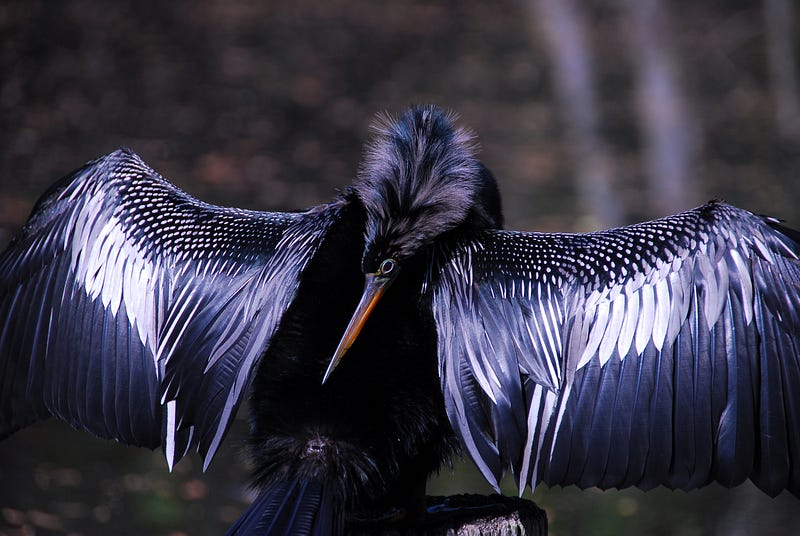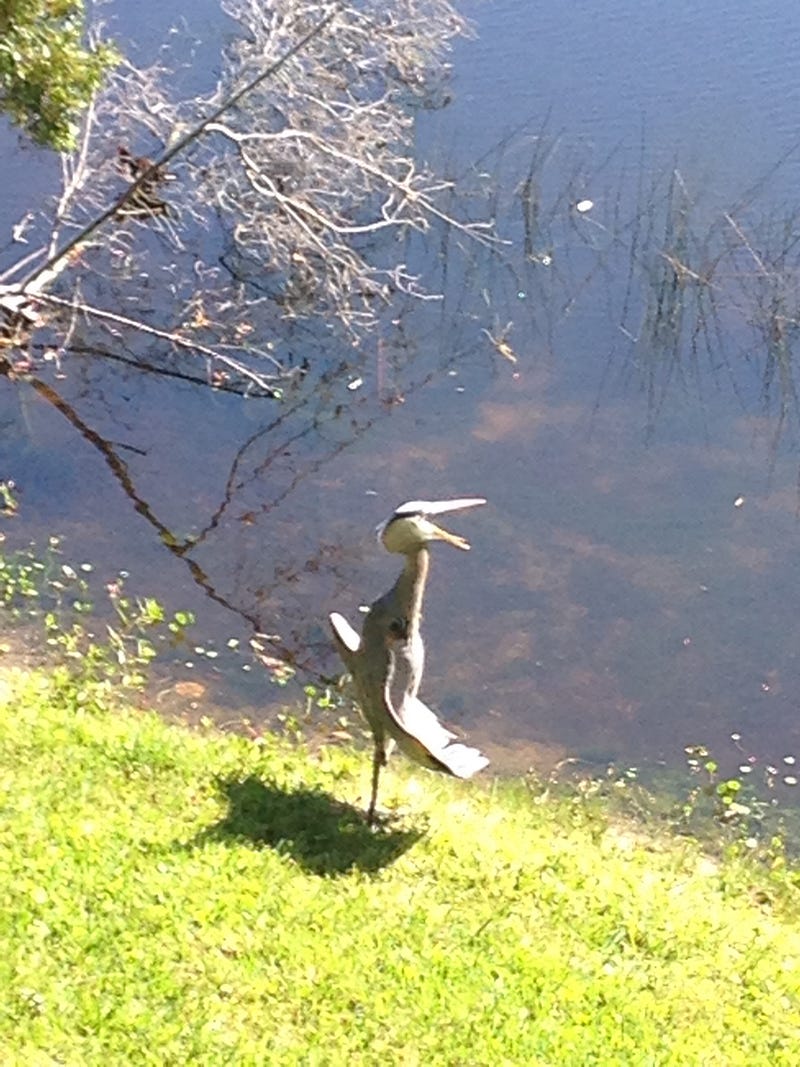
Sunshine is abundant in Florida, so much so that we often take it for granted. Because of all that sunlight, you can see basking behavior all the time. This most commonly occurs in reptiles, as they are ectothermic (usually known as ‘cold-blooded’, a term I dislike because of its misleading nature, their blood is not actually cold). Reptiles cannot regulate their internal body temperature like humans or other mammals and instead must rely on the outside environment. Thus, when they need to get warm, they have to bask in the sun.

That picture is a perfect example of why I think basking behavior is a lot more interesting than first glance. Those turtles are not simply sitting in the sun. They are laying flat on their plastrons (that’s the name of the underside of a turtle’s shell), sticking their heads out, and stretching out their legs while splaying their feet as wide as they can go. This maximizes the surface area that can absorb heat from the sun.
Reptiles aren’t the only animals that sun themselves down here. There are two species of birds that do so frequently as well. These are the double-crested cormorant, Phalacrocorax auritus, and the anhinga, Anhinga anhinga. This pair of birds does so not to heat their bodies, birds are like mammals and produce their own body heat (i.e. they are endothermic or ‘warm-blooded’), but to dry their feathers. These two are swimming birds that dive underwater to catch fish. However, unlike most waterfowl (ducks or geese), cormorants and anhingas do not possess an oil gland with which to waterproof their feathers. This makes it difficult when they want to fly, leading to this:

That picture is 9 years old, and they are far enough away that I can’t tell for certain, but I believe that those individuals are cormorants. They extend their wings outward so that the whole wing catches as much sunlight as possible. This is the same technique that the turtles in the previous picture were using: increase surface area to maximize efficiency. The anhinga takes that a step further.

In addition to the full wing extension, anhingas will also poof out the feathers along their neck to dry those as well (normally, the neck would look smooth instead of like a feather duster in the photo). I can still remember the first time I noticed that particular aspect to the anhinga sunning behavior. It was at an observation point in the Everglades off of Alligator Alley. I noticed something odd about an anhinga in my binoculars and it took me a bit to realize what it was doing. That feeling of exhilaration when you see a behavior for the first time is hard to describe, but to me it’s a rush much better than any roller coaster (of course, with my motion sickness that wouldn’t be too difficult, but you get the idea).
Sometimes, however, you come across something that defies a ready explanation. This can be both exciting and frustrating. Exciting because it is still something new and different. Frustrating because as a scientist you feel the need to be able to explain your observations. It takes a while for me to make peace with that duality. Since I am not writing scientific papers about these observations, I can speculate, but don’t really have to worry too much about coming up with an answer, especially for anecdotal experiences. One particularly stunning example of this involved basking behavior.

That is a great blue heron, Ardea herodias, probably my favorite species of bird. Herons, generally speaking, do not swim. They do not dive to catch their prey. They stalk them in the shallows. There would be no need for a heron to dry their wings because of that. They also do not need to use sunlight for heat like a reptile would, so why is it stretching out its wings at the perfect angle to catch the sun?

I honestly do not know, and I may never know. I have never seen a heron doing something like this, either before or since. Do I have some ideas? Yes. While a heron wouldn’t swim, their feathers could still get wet from rainwater. I don’t find this particularly likely, though, because this photo was taken in January, the dry season in Florida. It is also possible that this individual had recently eaten a large meal. The heat from sunlight can aid in digestion for many animals. Or maybe the sunlight just felt good (I’m sure plenty of you can relate to that).
In the end, it isn’t always necessary to be able to explain everything you see in nature. That doesn’t mean there isn’t an explanation, just that you can’t always find it. No matter what, as long as you can appreciate and enjoy nature. that’s the most important part.
Next time, I’m going to share a recent wildlife encounter from this past week with an unexpected visitor to South Florida.